Nature has a way of sculpting the world around us in fascinating and unexpected ways, and nowhere is this more evident than in the mysterious rock formations found across the globe. These unusual shapes, carved over millennia by wind, water, and time, have puzzled and captivated people for centuries. In this article, we take you on a journey to explore 16 of the most mysterious rock formations, each with its own distinct and curious shape, leaving us to wonder about the forces that created them and the secrets they might hold.
Uluru (Uluru-Kata Tjuta National Park, Australia)
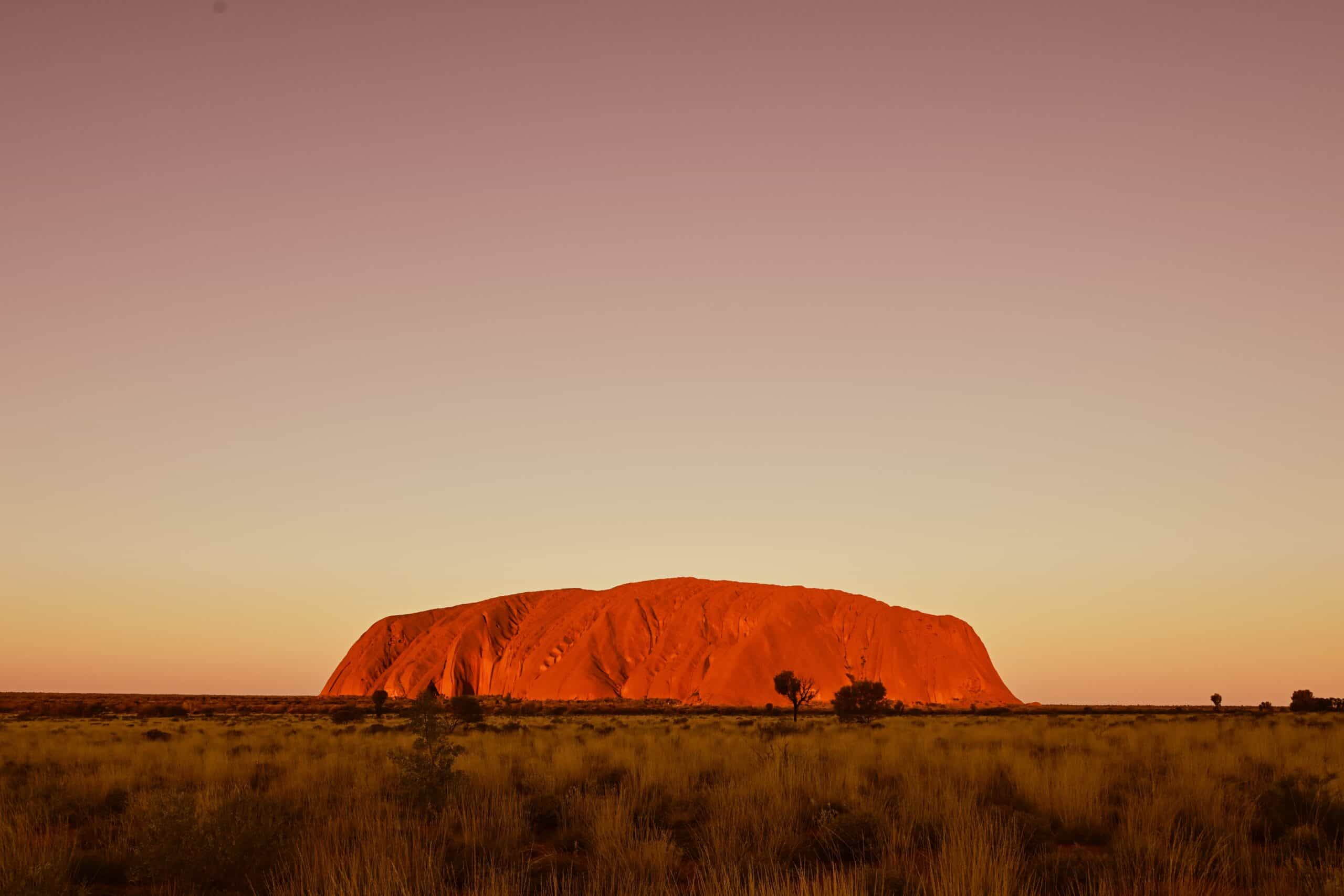
Uluru, also known as Ayers Rock, is one of the most iconic natural landmarks in Australia and the world. This massive sandstone monolith rises 348 meters above the surrounding desert plain and has a circumference of 9.4 kilometers, making it one of the largest single rock formations on Earth. Uluru’s striking appearance, with its steep sides and relatively flat summit, has long captivated both indigenous peoples and modern visitors. The rock is sacred to the Anangu people, the traditional owners of the land, who believe it was formed during the Dreamtime, an ancient era of creation in their culture. Uluru’s rich red color, which changes dramatically with the position of the sun, adds to its mysterious aura. Over 550 million years old, the rock’s origins trace back to the days when the region was submerged under the sea. Today, visitors to Uluru are drawn not only by its size and beauty but also by its spiritual significance and the many ancient petroglyphs and sacred sites that surround it.
The Fairy Chimneys (Cappadocia, Turkey)
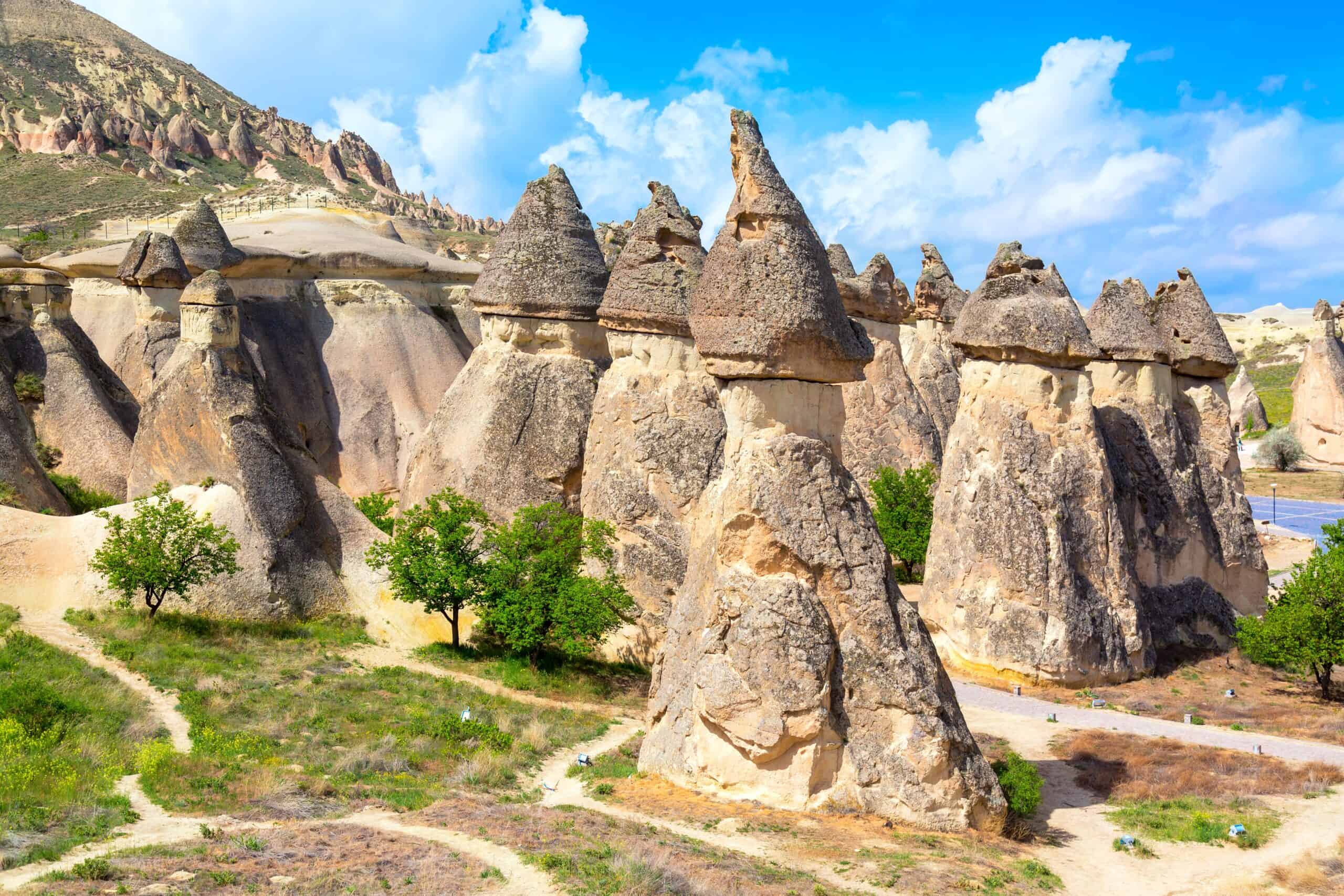
The Fairy Chimneys of Cappadocia, located in central Turkey, are a surreal and enchanting landscape of towering, cone-shaped rock formations. These natural wonders were formed millions of years ago through the combined effects of volcanic activity and erosion. When nearby volcanoes erupted, they blanketed the region in thick layers of ash, which later solidified into a soft rock called tuff. Over time, wind and water eroded the tuff, leaving behind the harder, more resilient basalt caps that now protect the spire-like formations beneath. The resulting “chimneys” resemble fairy-tale castles, with their slender, tapered shapes and often-multiple peaks. The unique geology of the area has made the Fairy Chimneys a UNESCO World Heritage site and a major tourist attraction. Adding to their mystique, many of these formations were hollowed out by ancient civilizations to create homes, churches, and monasteries, some of which are still accessible today. The combination of natural beauty and historical significance makes the Fairy Chimneys a truly magical destination.
Giant’s Causeway (Northern Ireland)
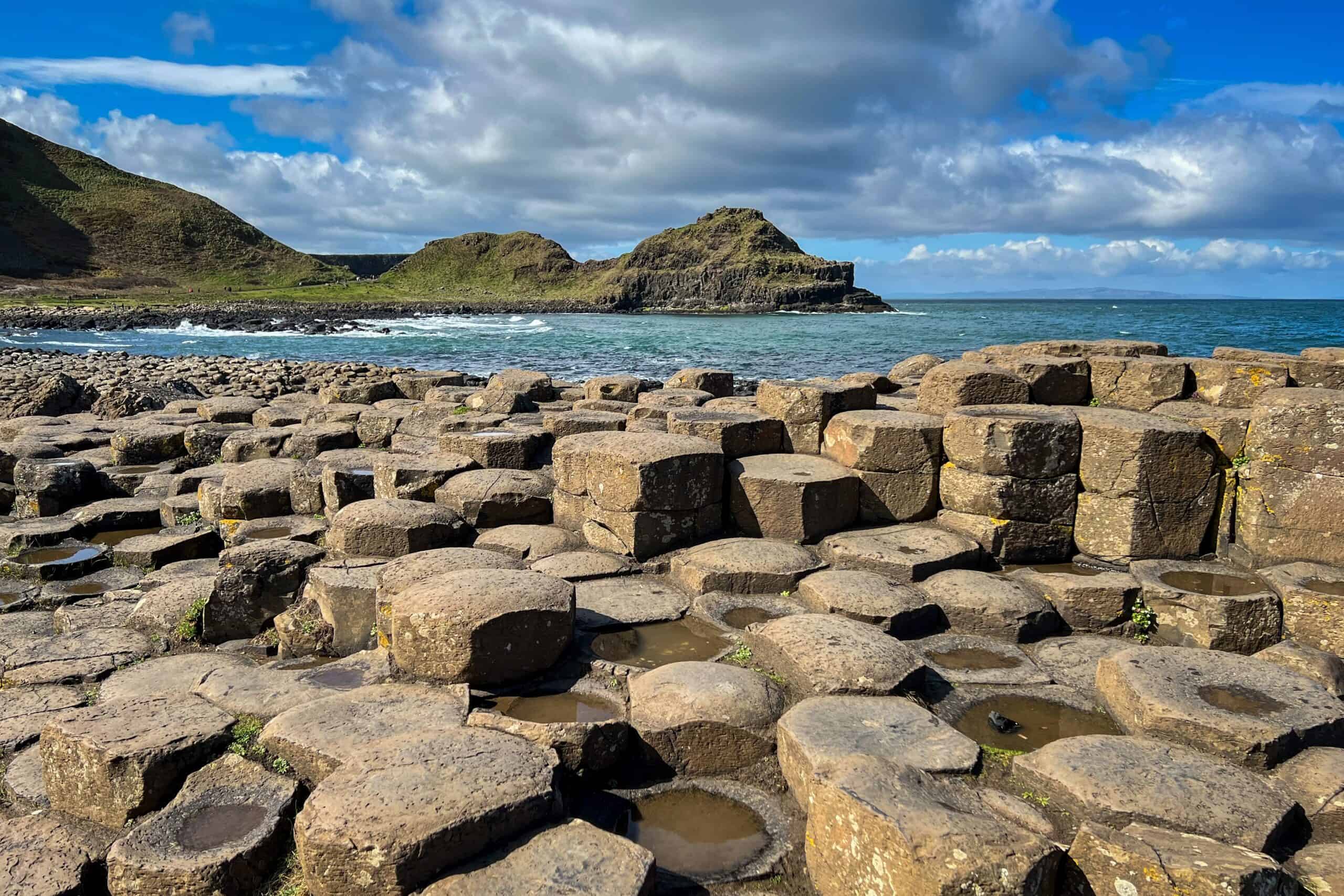
The Giant’s Causeway, located on the rugged coast of Northern Ireland, is a geological wonder composed of around 40,000 interlocking basalt columns. These hexagonal pillars, some reaching up to 12 meters in height, were formed about 60 million years ago during a period of intense volcanic activity. As lava cooled rapidly, it contracted and cracked into the polygonal shapes we see today. The result is a natural formation that looks almost too perfect to be real, leading to numerous legends about its origins. According to local folklore, the causeway was built by the Irish giant Finn McCool as a pathway to Scotland to confront his rival, Benandonner. When Benandonner saw how massive Finn was, he fled back to Scotland, tearing up the causeway behind him. The Giant’s Causeway’s unique appearance and the myths that surround it have earned it a place on the UNESCO World Heritage list. It remains one of the most visited and mysterious natural sites in the British Isles.
The Richat Structure (Adrar Plateau, Mauritania)
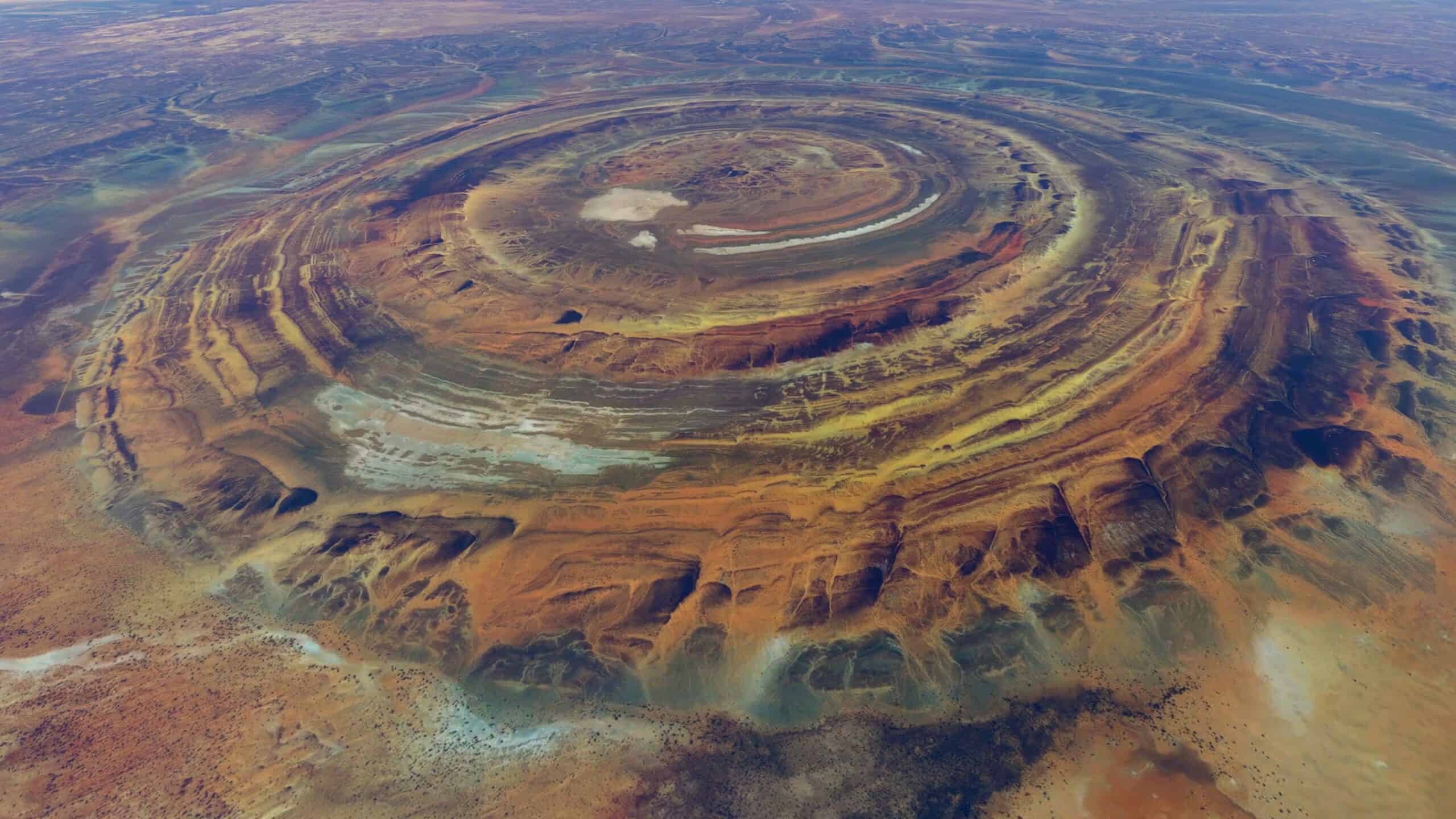
The Richat Structure, also known as the Eye of the Sahara, is a striking geological feature located in the Sahara Desert of Mauritania. Spanning 40 kilometers in diameter, this circular formation is easily visible from space and has been a landmark for astronauts since the earliest space missions. Initially thought to be an impact crater, further research revealed that the Richat Structure is actually a highly eroded geological dome. The layers of sedimentary rock that make up the structure have been exposed by wind and water erosion over millions of years, creating concentric rings that resemble a gigantic bullseye or an eye. The center of the structure is composed of ancient rocks dating back nearly 100 million years. Despite its remote location, the Richat Structure continues to fascinate scientists and travelers alike, not only for its unusual shape but also for the mystery surrounding its formation. Its vast, enigmatic appearance has also led to speculation about its connection to the lost city of Atlantis.
The Wave (Arizona, USA)
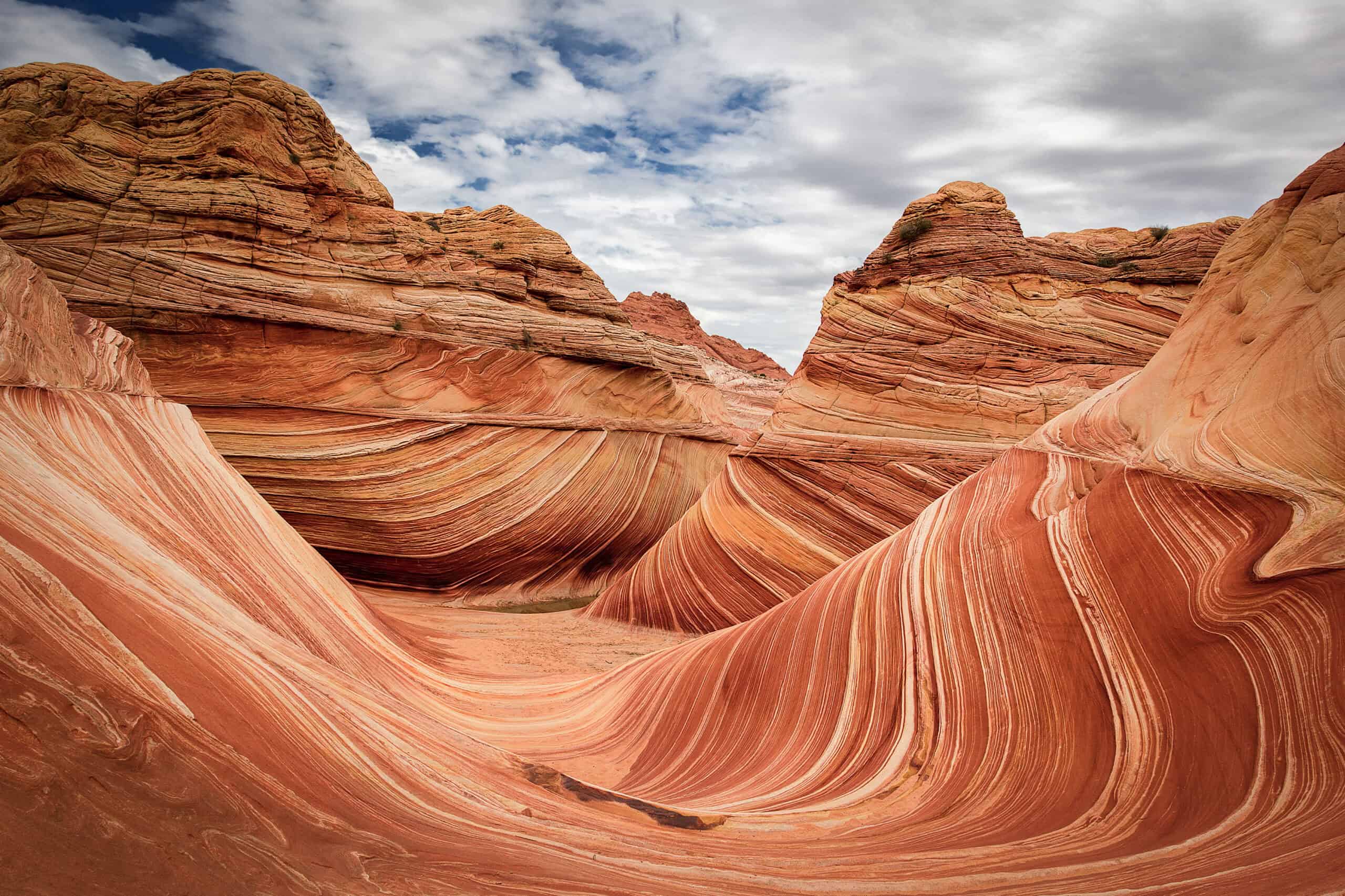
The Wave is one of the most visually stunning and unique rock formations in the world, located in the Paria Canyon-Vermilion Cliffs Wilderness on the border of Arizona and Utah. This natural wonder is known for its undulating, wave-like patterns in vibrant shades of red, orange, and pink. These swirling formations were created over millions of years as layers of sandstone were eroded by wind and rain, sculpting the rock into smooth, flowing curves that resemble frozen waves. The Wave’s delicate beauty and the fragility of its sandstone make it a highly protected area, with access limited to only 20 visitors per day via a lottery system. This limited access, combined with its remote location, adds to the mystique of The Wave, making it a coveted destination for photographers and hikers. The challenge of reaching The Wave, which involves a strenuous 6.4-kilometer hike through rugged desert terrain, only heightens the allure of this geological masterpiece.
Moeraki Boulders (New Zealand)
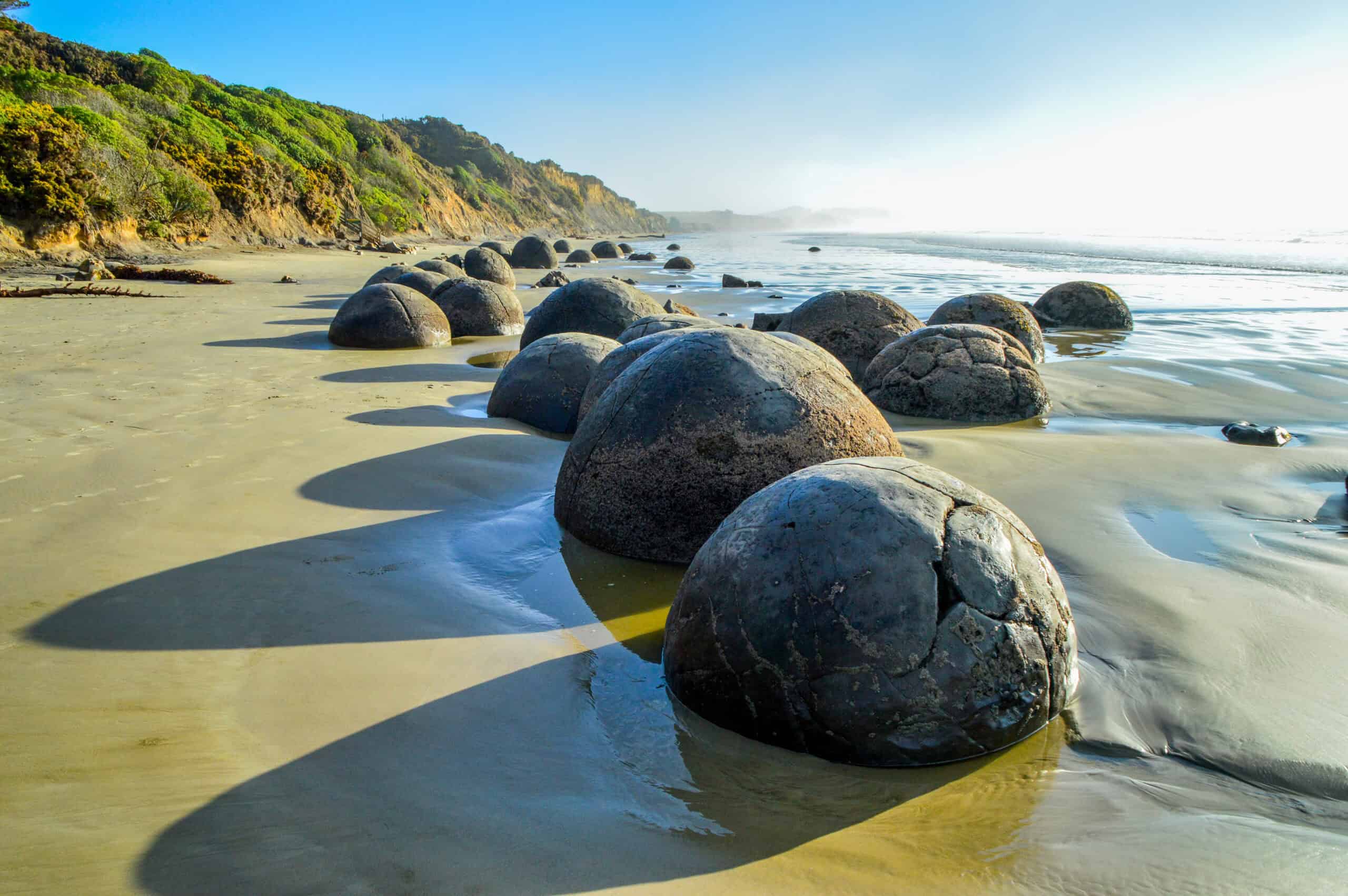
The Moeraki Boulders are a collection of large, spherical stones scattered along Koekohe Beach on the Otago Coast of New Zealand’s South Island. These remarkable boulders, some of which are up to 3 meters in diameter, appear almost otherworldly as they sit partially buried in the sand. Formed around 60 million years ago, the boulders are a type of concretions that began as sediment and mineral deposits around a central core on the ocean floor. Over time, these deposits hardened into the near-perfect spheres seen today, a process that took millions of years. The Moeraki Boulders have long been a subject of fascination, not only for their unusual shape and size but also for the local Maori legends that describe them as the remains of gourds and eel baskets washed ashore from the wreck of a giant canoe. The boulders’ enigmatic appearance and the mystery of their formation continue to draw visitors from around the world to this remote and beautiful stretch of coastline.
Pamukkale (Turkey)
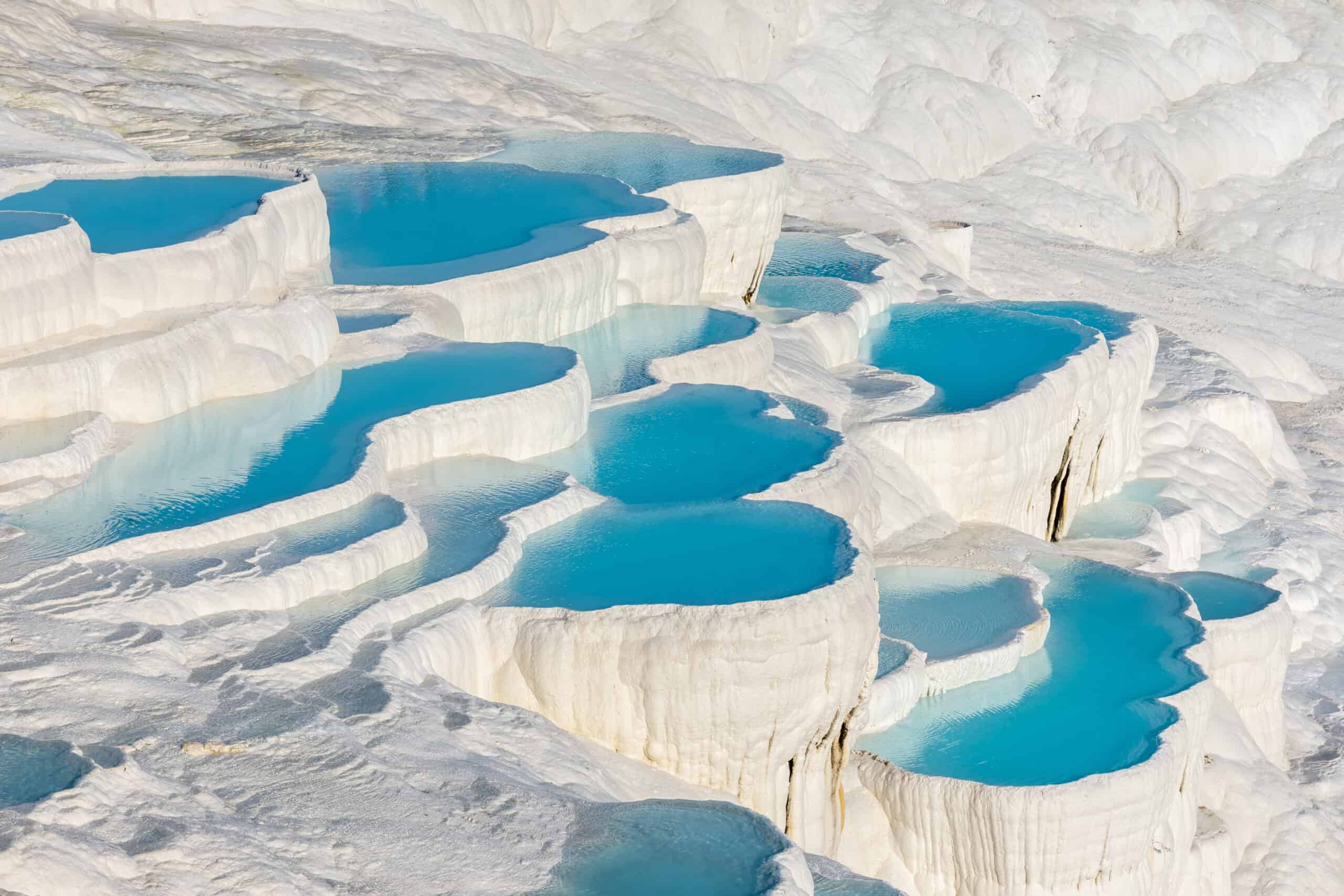
Pamukkale, meaning “cotton castle” in Turkish, is a natural site in southwestern Turkey known for its dazzling white terraces made of travertine, a form of limestone deposited by mineral-rich hot springs. These terraces cascade down the mountainside, creating a surreal landscape of bright white basins filled with warm, turquoise water. Pamukkale’s otherworldly appearance has made it one of Turkey’s most famous natural attractions, drawing visitors for centuries, including the ancient Greeks and Romans who built the city of Hierapolis at the site. The thermal waters of Pamukkale are believed to have healing properties, and the area has been used as a spa since ancient times. Today, Pamukkale is a UNESCO World Heritage site, recognized for its unique geological formations and historical significance. The contrast between the bright white terraces and the blue waters creates a mesmerizing visual effect, making Pamukkale one of the most unusual and beautiful rock formations in the world.
Devils Tower (Wyoming, USA)
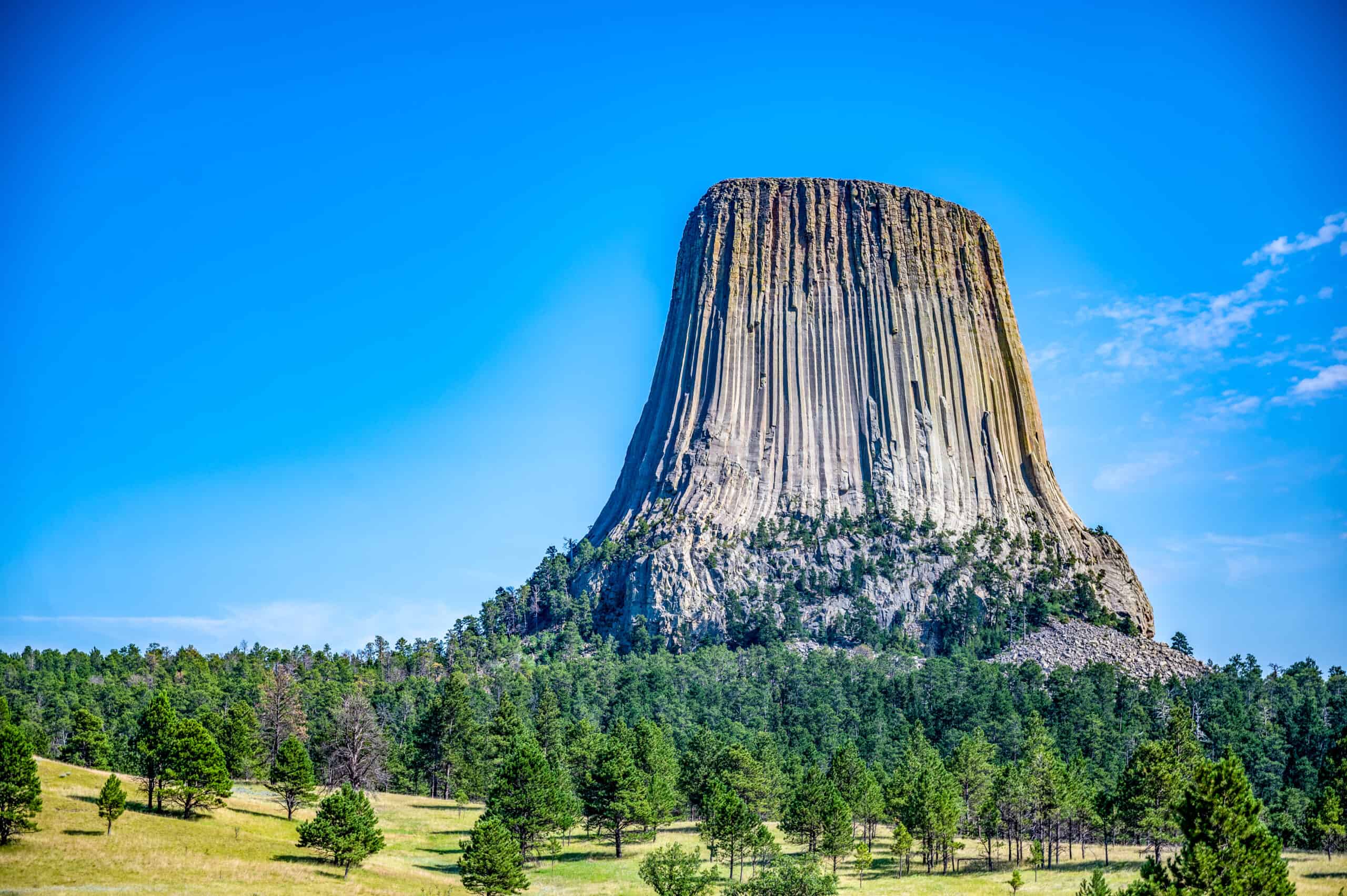
Devils Tower is a striking monolithic butte that rises 386 meters above the surrounding landscape in northeastern Wyoming. Known as “Bear Lodge” by some Native American tribes, this formation is considered a sacred site and plays a central role in many indigenous legends. Geologically, Devils Tower is believed to have been formed by the solidification of magma within the Earth’s crust, which was later exposed through erosion. The most distinctive feature of Devils Tower is its hundreds of vertical cracks, which give it a unique, fluted appearance. These columns, which can be seen from miles away, are so symmetrical that they almost appear to be man-made. Devils Tower was the first national monument designated in the United States, declared by President Theodore Roosevelt in 1906. The site continues to attract climbers, geologists, and tourists, all drawn by its mysterious formation and the stories that surround it. The sheer cliffs and towering presence of Devils Tower make it one of the most awe-inspiring rock formations in North America.
Chocolate Hills (Bohol, Philippines)
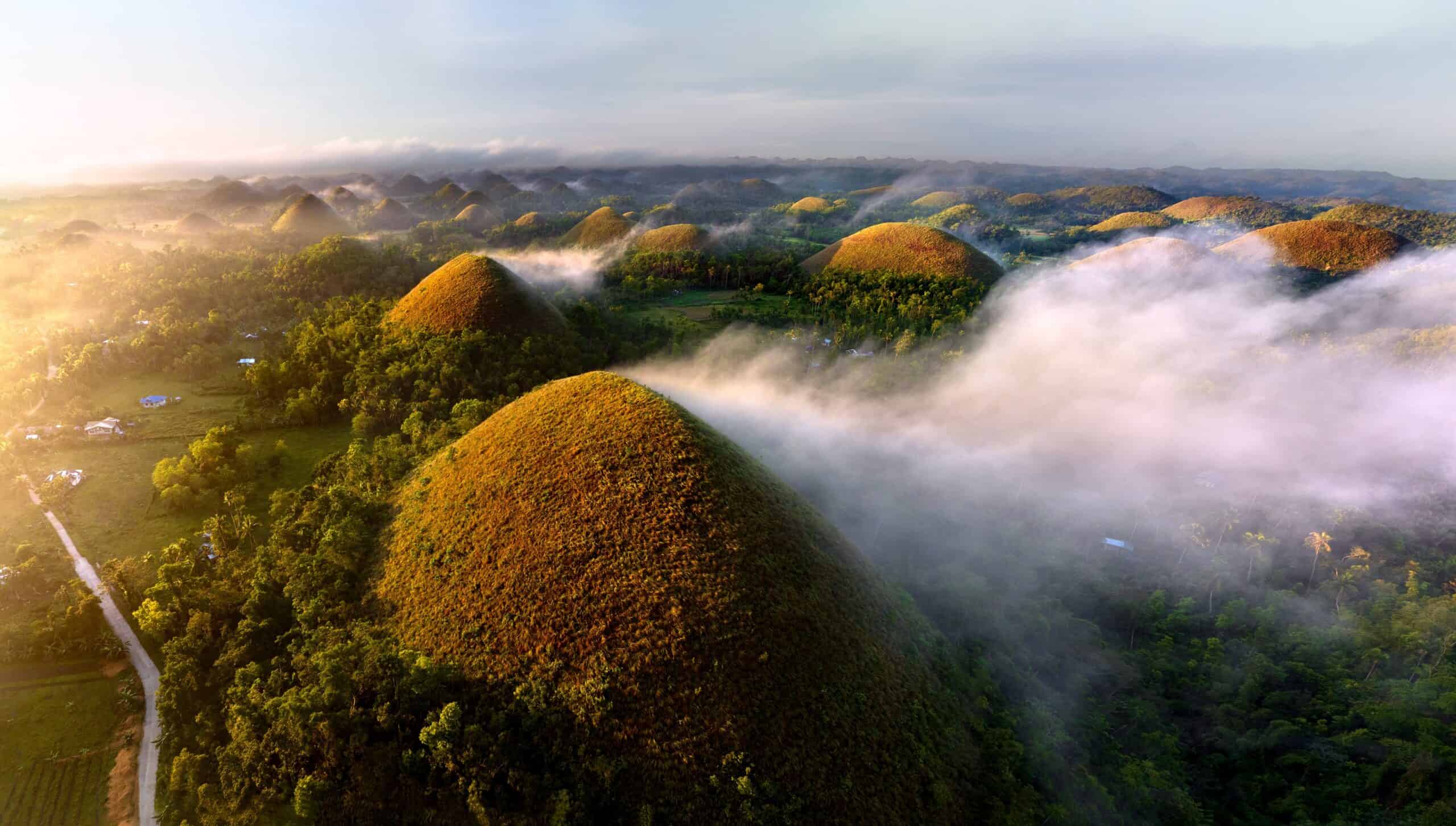
The Chocolate Hills are a geological formation located in the Bohol province of the Philippines, consisting of at least 1,260, and possibly up to 1,776, cone-shaped hills spread over an area of more than 50 square kilometers. These unique formations are composed primarily of limestone covered in grass, which turns brown during the dry season, giving the hills their “chocolate” appearance. The origin of the Chocolate Hills is a subject of local legend, with stories ranging from the tears of a giant to the remnants of a giant battle. Scientifically, the hills are believed to have formed from the uplift of coral deposits and the action of rainwater erosion over thousands of years. The uniformity of their shape and the vast number of hills make the Chocolate Hills a geological wonder and one of the most popular tourist attractions in the Philippines. The mysterious and almost surreal landscape they create is unlike anything else in the world.
The Pinnacles (Western Australia)
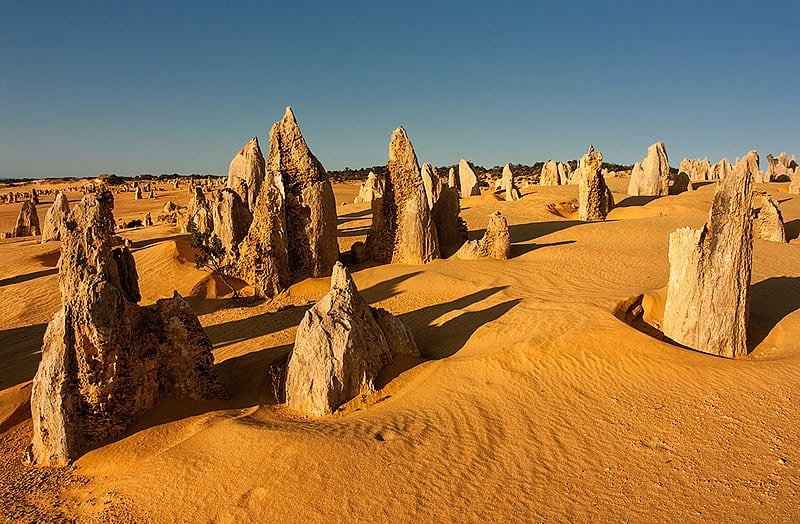
The Pinnacles are a series of thousands of limestone pillars that rise from the yellow sands of Nambung National Park in Western Australia. These eerie, otherworldly formations vary in size and shape, with some standing as tall as 3.5 meters. The Pinnacles were formed over millions of years as ancient seashells, which were broken down into sand, were cemented together by rainwater. As the surrounding sand was eroded by wind, the harder limestone formations were left standing, creating the forest of stone pillars seen today. The stark contrast between the yellow sand and the pale limestone creates a dramatic and surreal landscape, particularly at sunrise or sunset when the low light casts long shadows across the desert floor. The Pinnacles are one of Australia’s most unique and mysterious natural attractions, with their origins still not fully understood by scientists. The site’s haunting beauty has made it a popular destination for photographers, nature lovers, and those intrigued by the mysteries of the natural world.
Stone Forest (Yunnan, China)
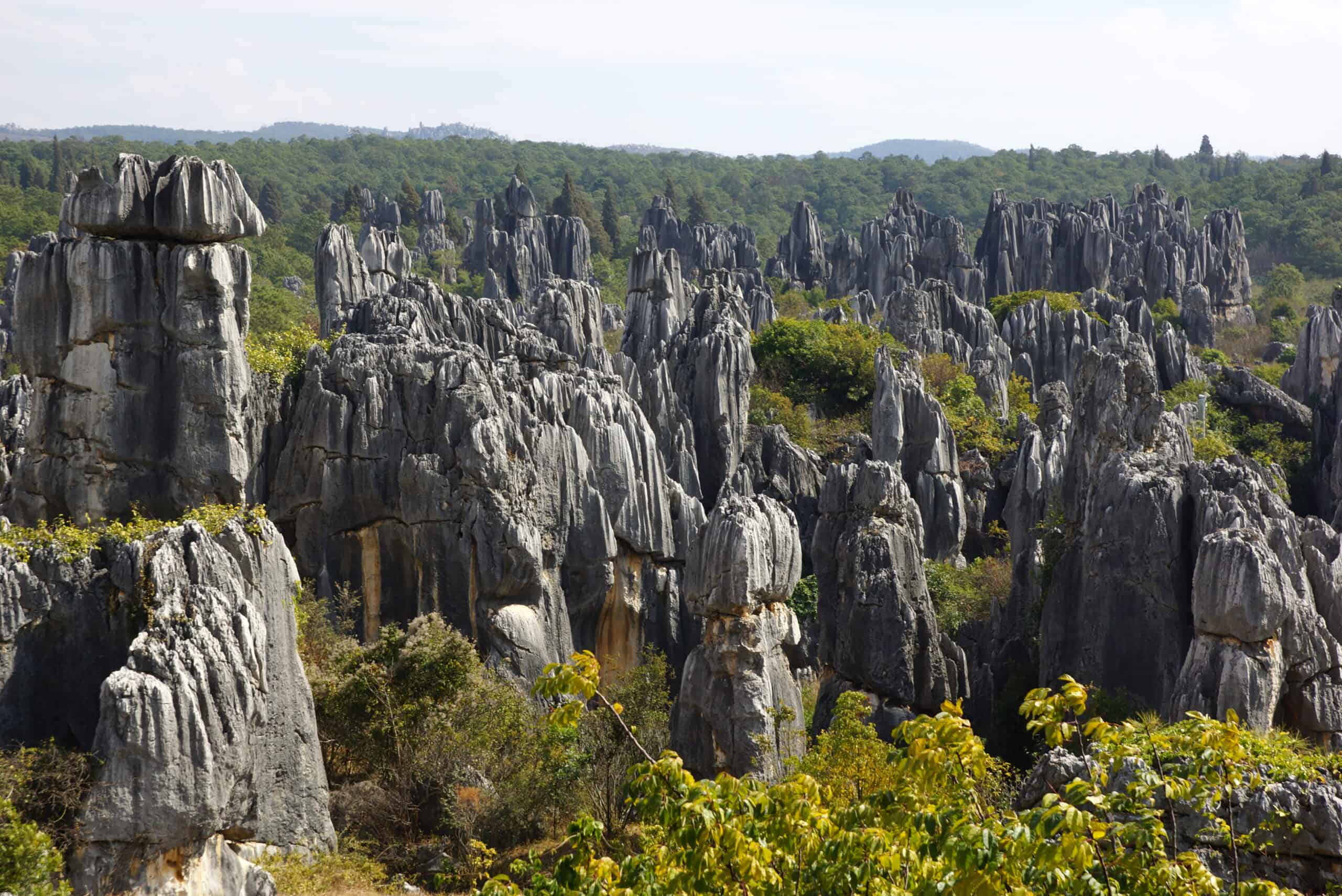
The Stone Forest, or Shilin, located in Yunnan Province, China, is a breathtaking expanse of towering limestone formations that rise dramatically from the ground, resembling a forest made entirely of stone. This unique landscape covers an area of more than 300 square kilometers and is part of a larger karst landscape that has been forming over millions of years. The limestone formations were created by the dissolution of soluble rocks, which were then sculpted by wind and water erosion into the sharp, towering spires seen today. The Stone Forest is not only a geological wonder but also a cultural treasure, with local legends dating back to the Ming Dynasty telling of a young girl, Ashima, who turned into stone in the forest after being forbidden to marry the man she loved. The site is a UNESCO World Heritage site and is one of China’s most popular tourist attractions, offering visitors a chance to explore a landscape that feels both ancient and otherworldly.
Goblin Valley (Utah, USA)
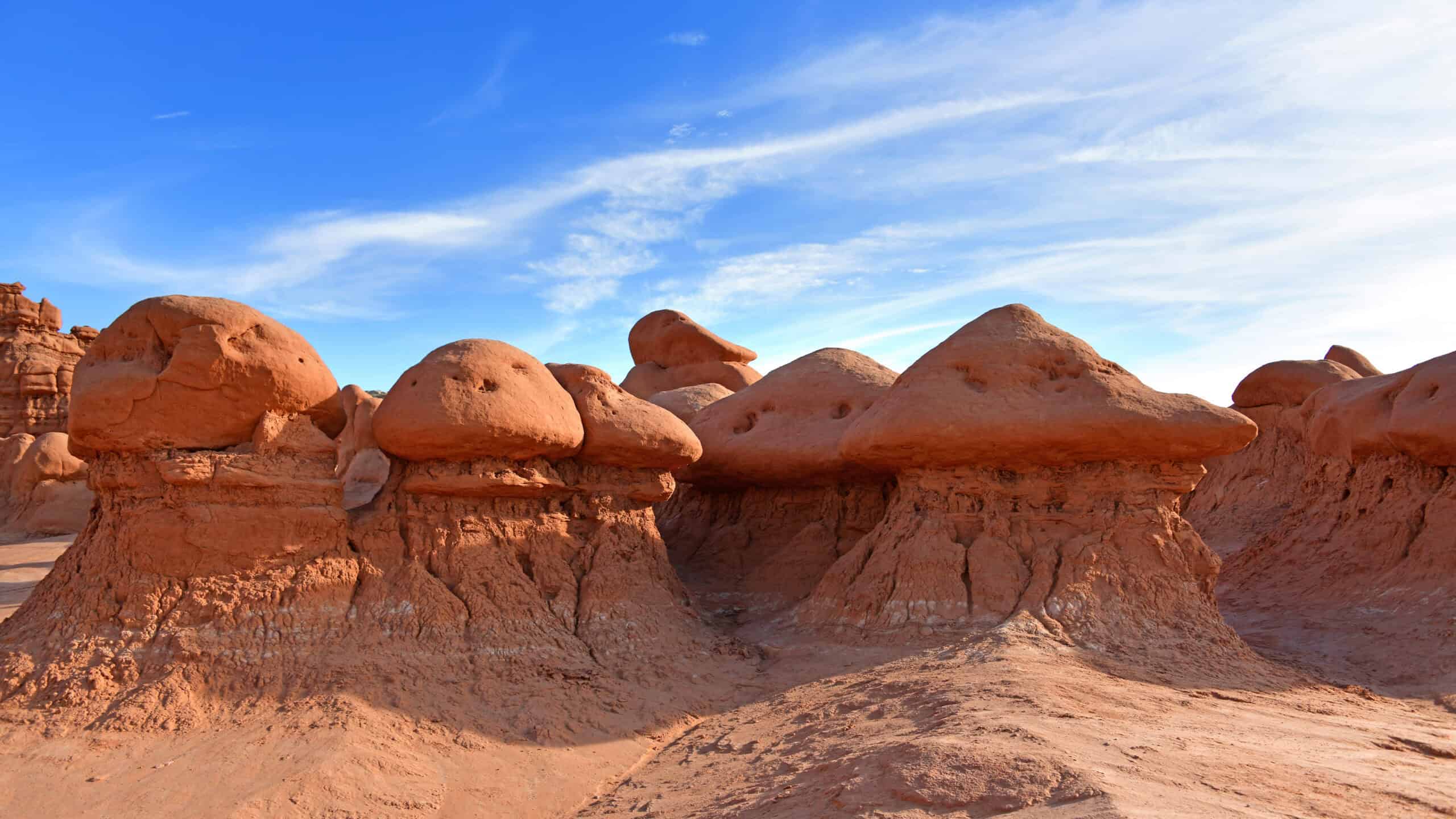
Goblin Valley, located in the remote desert of southern Utah, is a surreal landscape filled with thousands of mushroom-shaped sandstone formations known as hoodoos or “goblins.” These peculiar formations were created over millions of years as soft sandstone eroded, leaving behind harder rock formations that now stand like sentinels in the valley. The goblins range in size from just a few feet to several yards tall, and their odd, almost alien shapes have inspired countless myths and stories. The valley’s eerie, otherworldly appearance has made it a popular destination for hikers, photographers, and film crews—most notably serving as the backdrop for the sci-fi comedy “Galaxy Quest.” Goblin Valley’s unique landscape offers a sense of mystery and adventure, inviting visitors to wander among the goblins and experience a place that feels far removed from the ordinary world.
Turnip Rock (Michigan, USA)
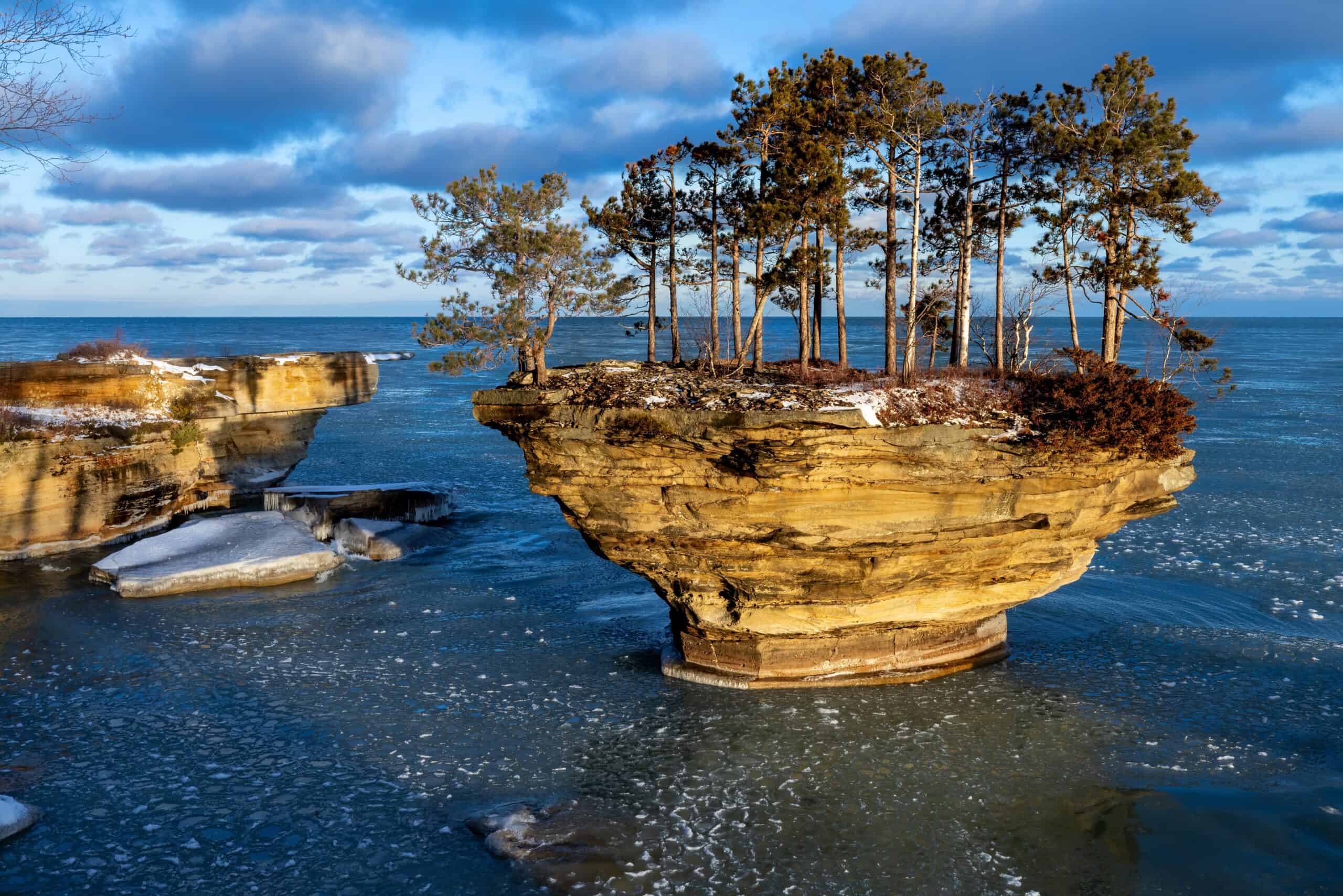
Turnip Rock is a small but striking rock formation located in the shallow waters of Lake Huron, off the coast of Michigan’s Thumb region. This unusual formation, which resembles an upside-down turnip, was created over thousands of years as waves eroded the softer limestone, leaving behind the harder rock that now stands alone in the water. The isolation of Turnip Rock, combined with its distinctive shape, has made it one of Michigan’s most photographed natural landmarks. The only way to reach Turnip Rock is by kayak or canoe, which adds to the allure and mystery of this hidden gem. The formation’s precarious appearance, with its narrow base supporting a much wider top, seems to defy gravity and invites curiosity about how long it will continue to stand. Turnip Rock’s combination of natural beauty and the challenge of accessing it makes it a must-see for adventurers and nature lovers alike.
Elephant Rock (Valley of Fire State Park, Nevada, USA)
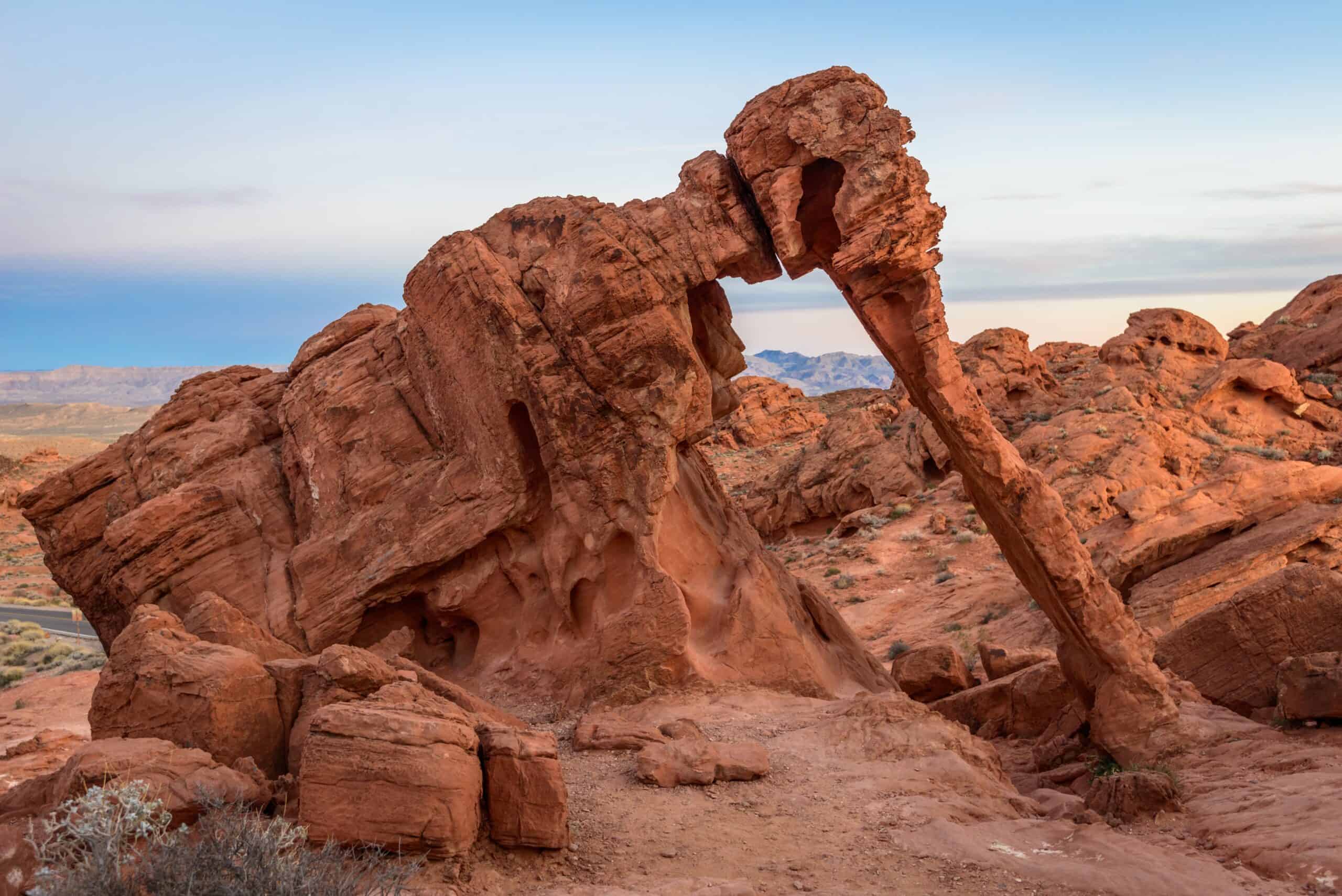
Elephant Rock is a natural rock formation located in Valley of Fire State Park in Nevada, known for its striking resemblance to a giant elephant. This formation, standing just off the park’s east entrance, was created by the erosion of red sandstone over millions of years. The most distinctive feature of Elephant Rock is its “trunk,” which is formed by a long, thin arch of rock that perfectly mimics the shape of an elephant’s nose. The rock formation is easily accessible and is one of the park’s most popular attractions, drawing visitors who are fascinated by its lifelike appearance. The surrounding landscape, with its vibrant red rocks and rugged desert scenery, only adds to the mystique of Elephant Rock. The park itself is named for the fiery red sandstone formations that dominate the area, but it’s the natural sculptures like Elephant Rock that capture the imagination and make Valley of Fire a destination for those intrigued by nature’s artistry.
Devil’s Postpile (California, USA)
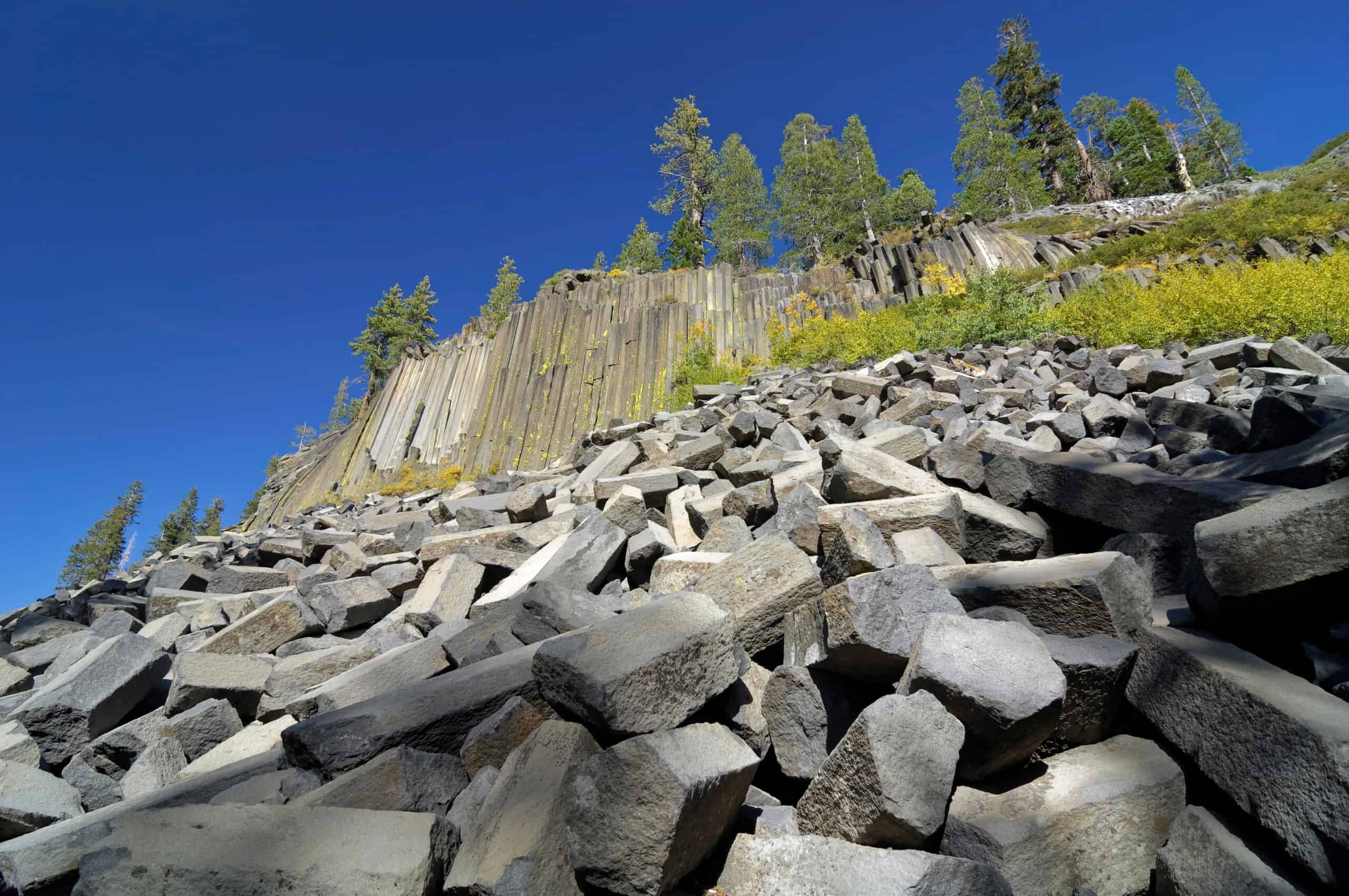
Devil’s Postpile, located in the Eastern Sierra Nevada in California, is a rare and impressive formation of basalt columns that rise up to 18 meters high. These columns, which appear to have been meticulously stacked by hand, were formed around 100,000 years ago as a result of a lava flow that cooled and contracted, causing the rock to crack into hexagonal shapes. The columns are unusually uniform in shape and size, creating the appearance of a giant, ancient postpile. The formation is so unique that it has been designated a National Monument, preserving it for future generations to study and admire. Over time, glacial activity has polished the tops of the columns, giving them a smooth, shiny appearance that contrasts with the rough texture of the sides. The Devil’s Postpile’s striking geometric shapes and the mystery of its formation make it one of California’s most intriguing natural wonders.
Skull Rock (Joshua Tree National Park, California, USA)
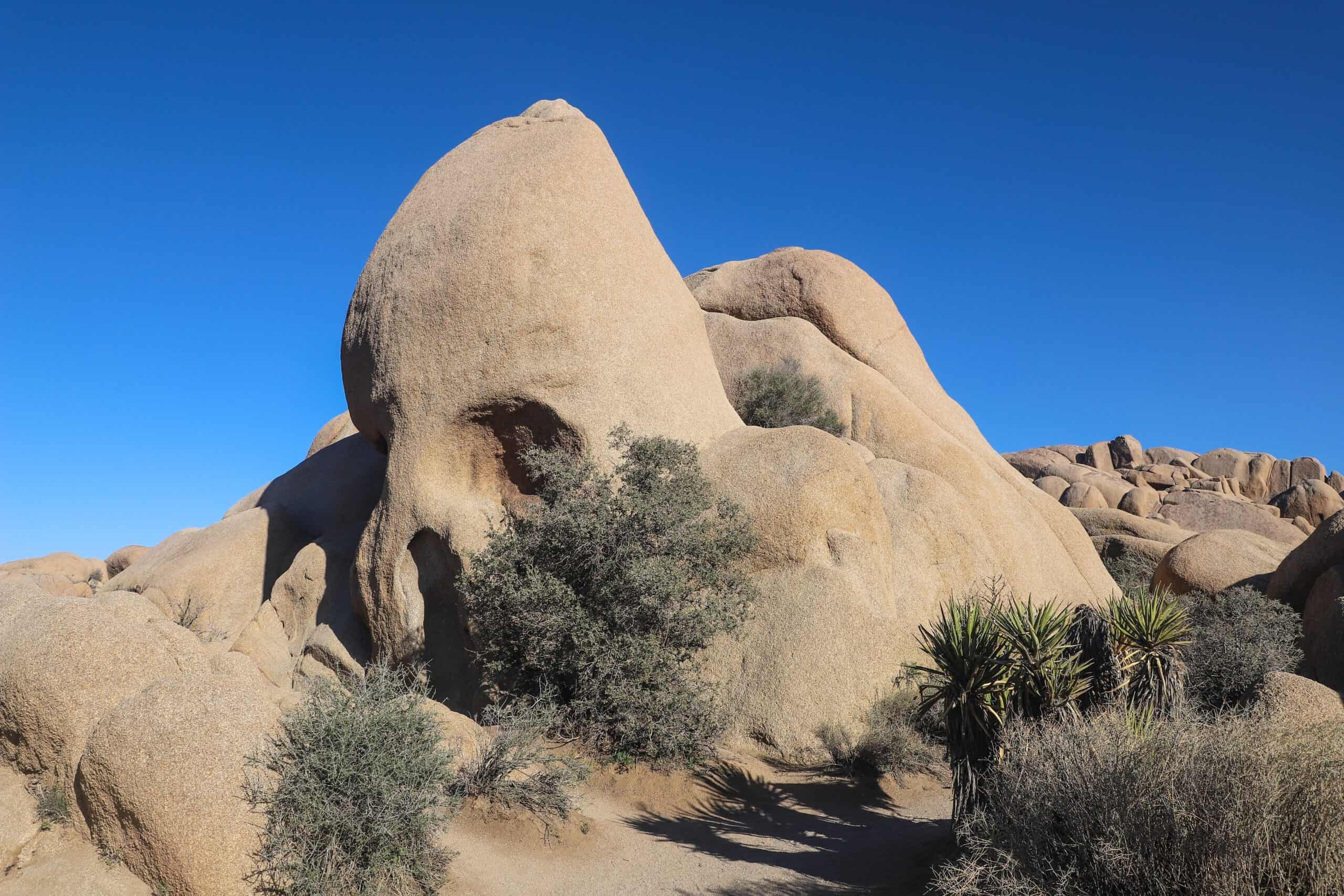
Skull Rock, located in Joshua Tree National Park, is one of the most famous and eerie rock formations in the park. As its name suggests, the rock formation resembles a giant skull, with hollowed-out “eye sockets” and a rounded “head.” This unusual shape was created by the gradual erosion of the granite rock over thousands of years, as water collected in depressions on the rock’s surface and eventually carved out the skull-like features. Skull Rock is easily accessible, located just off the main park road, and has become a popular destination for hikers and photographers. The surrounding landscape of Joshua Tree, with its twisted, spiky trees and otherworldly rock formations, adds to the mysterious and almost surreal atmosphere of the area. Skull Rock is a prime example of how nature can create shapes that are both familiar and unsettling, making it a must-see for visitors to the park.
This article originally appeared on Rarest.org.
More from Rarest.org
In the world of fashion, certain pieces transcend mere clothing and become iconic artifacts. Read more.
Ancient temples are not just architectural marvels; they are windows into the past, offering glimpses into the cultures, religions, and lives of early civilizations. Read more.
Exploring North America by road is a breathtaking experience, offering a chance to witness the continent’s diverse landscapes up close. Read more.



